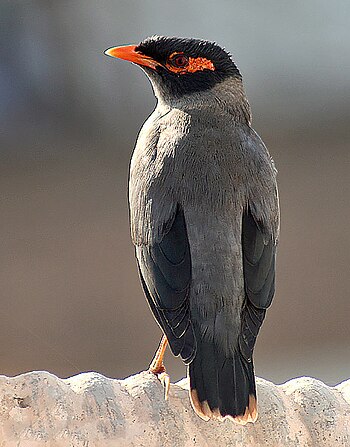(Original Title: Rainforest Birds - Turquoise Tanager)
 |
| Turquoise Tanager - Jurong Bird Park, Singapore (Photo credit: Wikipedia) |
Bird Name:
Turquoise Tanager
Latin Name:
Tangara Mexicana
Status:
Least Concern
Scientific Classification:
Kingdom: Animalia
Phylum: Chordata
Class: Aves
Order: Passeriformes
Family: Thraupidae
Genus: Tangara
Species: T. Mexicana
General Information:
The Turquoise Tanager is a medium-sized passerine bird that occurs in northern and northeastern South America. It is a resident of the Amazon Basin as well as adjacent rivers. It is a social bird and is often found in small flocks.
Physical Description:
The adult birds are around 5.5 inches long and weigh approximately 20 grams. They have long tails and dark stout bills. When fully grown, these tanagers are dark blue in color with yellow underparts. The Trinidadian form, T. m. vieiloti has a darker blue hue and brighter yellow belly than their mainland counterparts. The east Brazilian subspecies, T. m. brasiliensis is pale, silvery-blue with dark spots on its throat and chest and white on its belly.
Diet:
The Turquoise Tanager feeds primarily on fruit but will also eat insects, flowers, leaves, and seeds.
Habitat:
Its range stretches within the Amazon Basin to Colombia, Venezuela, the Guianas, Brazil, Bolivia. It is also common on the island of Trinidad, where it is a resident breeder. It inhabits forests, semi-open areas, and cultivated lands. This bird typically builds a bulky cup nest in a tree or shrub. In eastern Brazil, there is a disjunct population living from Bahia to Rio de Janeiro.
Reproduction:
The female Turquoise Tanager lays 2 to 3 brown-blotched, gray-green eggs per clutch. The female incubates the eggs for about 12 - 14 days. Pairs break off from the flock to reproduce. After hatching, pairs rejoin the flock but return to feed the young.
Author Tony Mandarich has written many articles about one of his passions, rainforest birds. Article Source: EzineArticles |




